When you’re first starting out, creating a blog name can be downright overwhelming. You want it to be something that is unique, yet is easy to remember, while also describing your website. Sounds impossible, huh?! We’re walking you through the best steps to choosing a blog name, and we’re also sharing the biggest mistakes that you definitely want to avoid when naming your website.

When you’re about to start a travel website, creating your blog name can feel damn near overwhelming. And we’re going to be honest; naming your blog is a big deal.
You want your site name to be:
Memorable + Easy to Pronounce + Describes Your Site + Shows personality
If you create a money-making blog, the name you choose will become the face of your brand. It will be on your business cards and the name of your LLC. It will be the phrase you say over and over and over again when you meet new people.
You’ll want it to be a perfect balance of memorable and timeless and creative. You want it to show your personality while representing what it is your site is about. And you sure as hell don’t want it to be something you’ll grow sick of.
Have we mentioned naming your blog comes with a lot of pressure?!
But before you start sweating and let your panic convince you to just give up altogether, we’ve got good news: Choosing a blog name can be fun if you have some strategies up your sleeve. It can be a chance to get creative, and it is the start of something big.
We’ve got you covered with tried and true techniques to help you in the brainstorming process. Plus, we’re going to go over some huge mistakes that you definitely don’t want to make when you name your blog.
Note: For the purpose of this article, we are focusing on travel blogs, but these steps and techniques can be used to create a domain for any type of website.
Get your paper and pen ready, because we’re gonna walk you through the steps that’ll help you come up with a perfect name for your blog!
Step #1: Old Fashioned Brain Dump
We’d recommend by starting the good old fashioned way: Get out a piece of paper and a pen and start jotting down words, phrases, whatever comes to mind.
If you’re creating a travel blog, what types of words come to mind when you think of travel? What feelings come up? What places? What items? Think of as many words as you can that describe travel.
Do it in stream-of-consciousness and don’t think. Don’t judge. Just write.
And now think about yourself… How would your friends describe you? Do you have nicknames? What are your interests? What do you look like? What’s your favorite food? What do you ALWAYS pack?
Fill up a whole page of words: Adjectives, Verbs, Nouns. ALL the words. Include words that are both literal AND abstract.
By the end of this exercise, you should have an entire page (at least!) filled up with a variety of words and phrases.
Step #2: Get out your Thesaurus
Now, get out a thesaurus. Well let’s be real, since you likely don’t have an actual thesaurus lying around, head to Thesaurus.com (or the app!), and go through the list you just wrote down. For each word or phrase, write down at least 3 synonyms you find in the thesaurus.
For us, the word “soles” came as we wrote down synonyms to “feet”. We probably never would have thought of this word right away, so it’s important not to skip this step.
Try these tips for adding more creative words to your list:
Translate some words into another language
Speak another language? You could go through some of the words from your list and translate them. This could be especially cool with a travel blog because it connects your website in a global way.
But I would tell you to be a bit cautious if you plan to do this… Choose a language you have some connection to. Did you grow up speaking French? Are you starting your travels in Spanish-speaking countries? You will need to explain the name of your blog time and time again, so make sure you have some connection to the words.
Or find a word in another language that has no English counterpart. We have a whole list of unique “travel words” that come from other languages that relate to travel.
Add words with cool definitions to the mix
Have you ever heard a pretty-sounding word and then you read the definition, and it’s just as beautiful? Like “serendipity” or “aurora”…
For instance, our friends Naomi and Dustin have an Instagram account called “Irie to Aurora” which sounds beautiful and has a really cool meaning.
-
Irie: state of feeling good; positive vibes (comes from Jamaican Creole)
-
Aurora: dawn; can also refer to Northern Lights
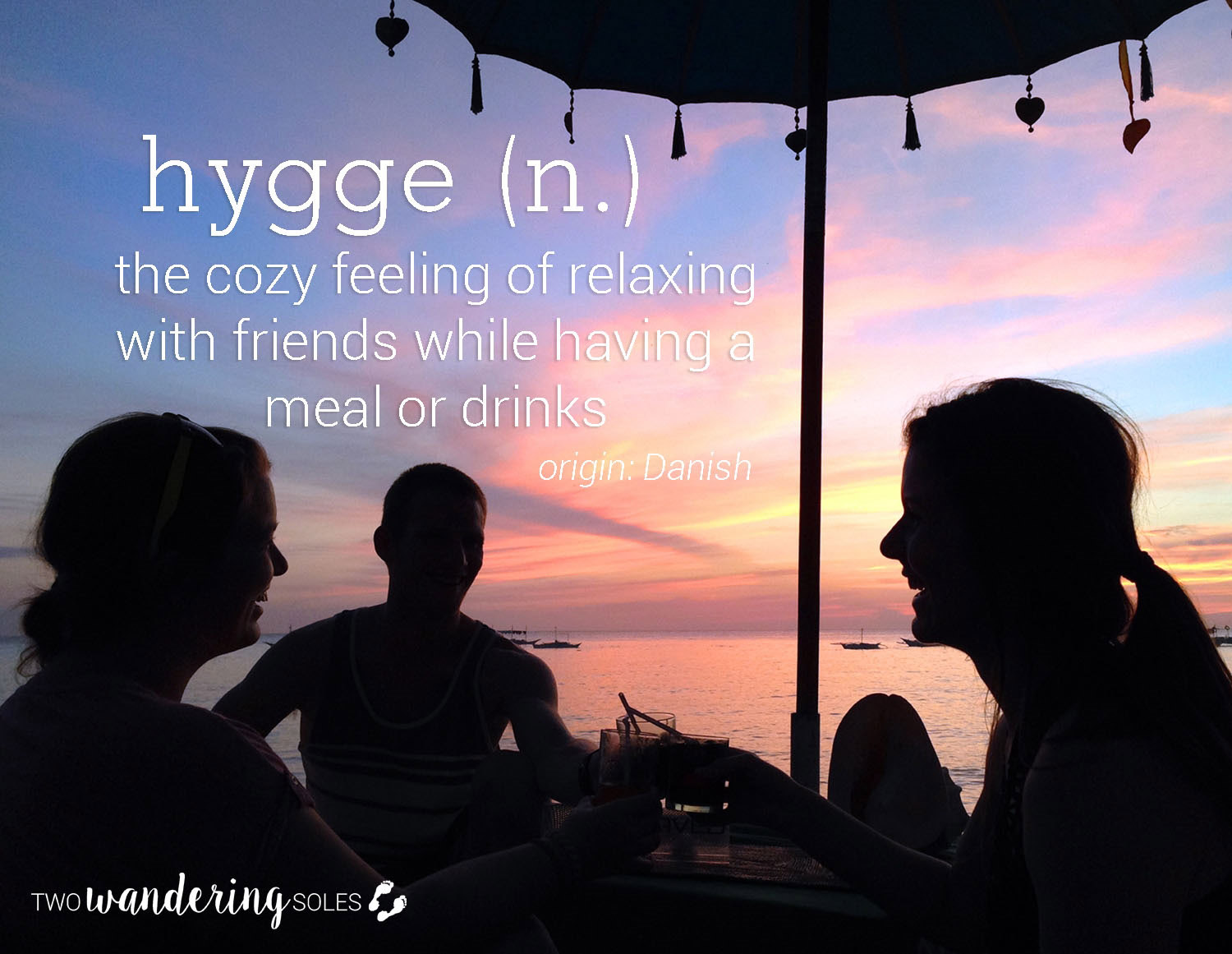
Do some digging online, and you’ll surely be able to find a handful of words to add to your brainstorm list.
Check out this list of words with beautiful definitions.
Add in your name
This was a pretty popular blog-naming tactic a handful of years ago, and a lot of the OG travel bloggers followed this format:
Adjective + First Name
Examples: Nomadic Matt, Wandering Earl, Adventurous Kate
You could even take it a little further and put your name into a phrase, like “Alex in Wanderland”.
This can be an easy way to come up with a domain that represents you and explains what your site is about. However, this is hardly a new tactic. It has been done again and again, so it’s not all that unique anymore. Before diving too far into this rabbit hole, do a quick search of “your first name + travel blog” and see how many other sites pop up.
If your first name doesn’t work, consider using your last name. Sometimes it works really well! Two examples of couples using their last name:
-
Last name: Peakes = “Traveling Peakes”
-
Last name: Law = “Laws of Travel”
But for those of us with last names that are not very easy to fit into a sentence, like Diederichs (Katie) and Zweber (Ben), this technique doesn’t really work so well… if at all.
Step #3: Mix & Match
Now, you have a HUGE list of words.
It’s time to start making different combinations with all the words on your paper. And don’t shy away from combining words that are seemingly unrelated.
For instance, these blog names combine two words that are not related, yet they work together to describe the website very well:
-
Practical + Wanderlust = Practical Wanderlust: The combination of 2 contradictory words is powerful here and illustrates that this blog gives down-to-earth travel tips.
-
Blonde + Abroad = The Blonde Abroad: These words are unrelated, yet we can assume this blog will be from the perspective of a woman who travels. We might also assume there is a focus on beauty or fashion since appearance is referenced in the name.
Try Alliterations
This was one of those literary devices that you were quizzed on in high school (I should know, I used to be a 9th grade English teacher!). And it might come in handy as you come up with a name for your blog.
Alliterations: a phrase with the same letter (or sound) at the beginning of each word.
One of the most famous examples of this is, “Sally sells sea shells by the sea shore”.
This can be a fun tactic to use, and it can create a blog name that is easy to remember. Check out that list of words and try to connect some that start with the same letter.
-
The Broke Backpacker
-
Jen on a Jet Plane
-
Hippie in Heels
-
Passion Passport
Don’t force it too much. Not every word in your title needs to start with the same letter. And also, make sure it still means something. Just because you make an alliteration doesn’t mean it’s a good blog name.
To Connect or not to connect…
Once you’ve chosen 2-3 words, you may choose to add in connecting words, like “the”, “a”, “with”, etc.
You could go the opposite direction — à la Eat, Pray, Love — and simply combine words with no connectors. You could even go a step further and smush two words together to create your own, like Nomadasaurus.
For example, when we did this exercise, the words we liked were “Wandering” and “Soles”. We added “Two” at the beginning, but we just as easily could have made it “our wandering soles” or “the wandering soles”. Or we simply could have left our name: “Wandering Soles” with no connecting words at all.
Step #4: Play on Words
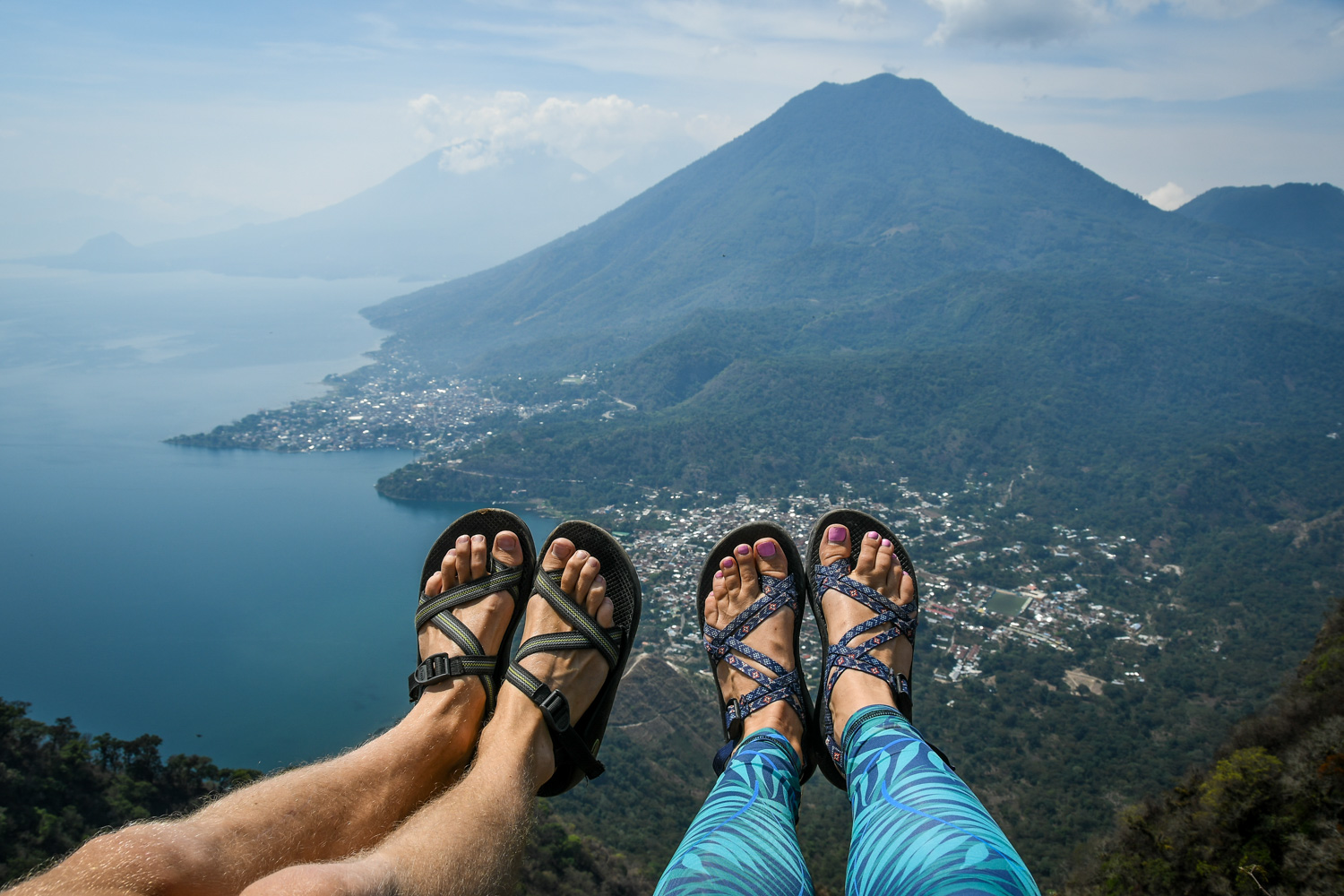
One way to make your blog name memorable is to make a play on words. For instance, our blog name, Two Wandering Soles, is a pun. (SOLES means feet, get it?!)
Know that creating a play on words can make your name memorable, but it can also be confusing. So try not to be too far-fetched; the simpler the better.
Add onto the word
You can used a Prefix or Suffix to change the words slightly to be more unique. Something like:
-
Adding -ly, Example: Dream + ly = Dreamly
-
Adding -ation, Example: Travel + ation = Travelation
-
Adding -ize, Example: Nomad + ize = Nomadize
-
Adding un- , Example: Un + travel = Untravel (kind of sounds like “unravel”!)
-
Adding pro- , Example: Pro + dreamer = Prodreamer
Add a letter
Some successful bloggers have just added a letter to a common travel term and voilà, a new travel blog name is born. Here are two examples:
-
y + travel = yTravel Blog (like why not?)
-
planet + D = The Planet D blog (their names both start with the letter D)
Make up a word
Do you have two words in mind and can’t decide on which one? Try making up a new word! Check out Wordoid and start combining words to see if they work out.
Think Logically and for SEO
As you are expanding on or making up new words, try to have in mind the common phrases you want your brand to be represented by. This will not only help you with SEO (search engine optimization) but it will make you more credible when talking other people.
For example, Globe Guide or Travel with Purpose, you get a good feel from the name of what their message is about and they include keywords so it gives a little boost in search engines.
Step #5: Start eliminating…
At this point, you should have a list of different potential blog names, and it’s time to start making cuts. Cross out any that are:
-
Hard to pronounce
-
Difficult to spell
-
Boring
-
Don’t describe your website
Step #6: Think about the tone
Once you have a handful of viable blog names, really take a moment to consider what kind of tone you want your website to have…
Authoritative? Fun? Down to Earth? Spunky?
And think about your potential audience. Will you be writing for budget backpackers or couples who prefer luxury travel? They are going to lean toward different names.
-
Expert Vagabond will appeal more to long-term budget travelers.
-
Caviar and Cashmere will draw those interested in luxury.
Go through your list of names and cross out any that don’t evoke the emotion you want to spark. Circle the ones that do.
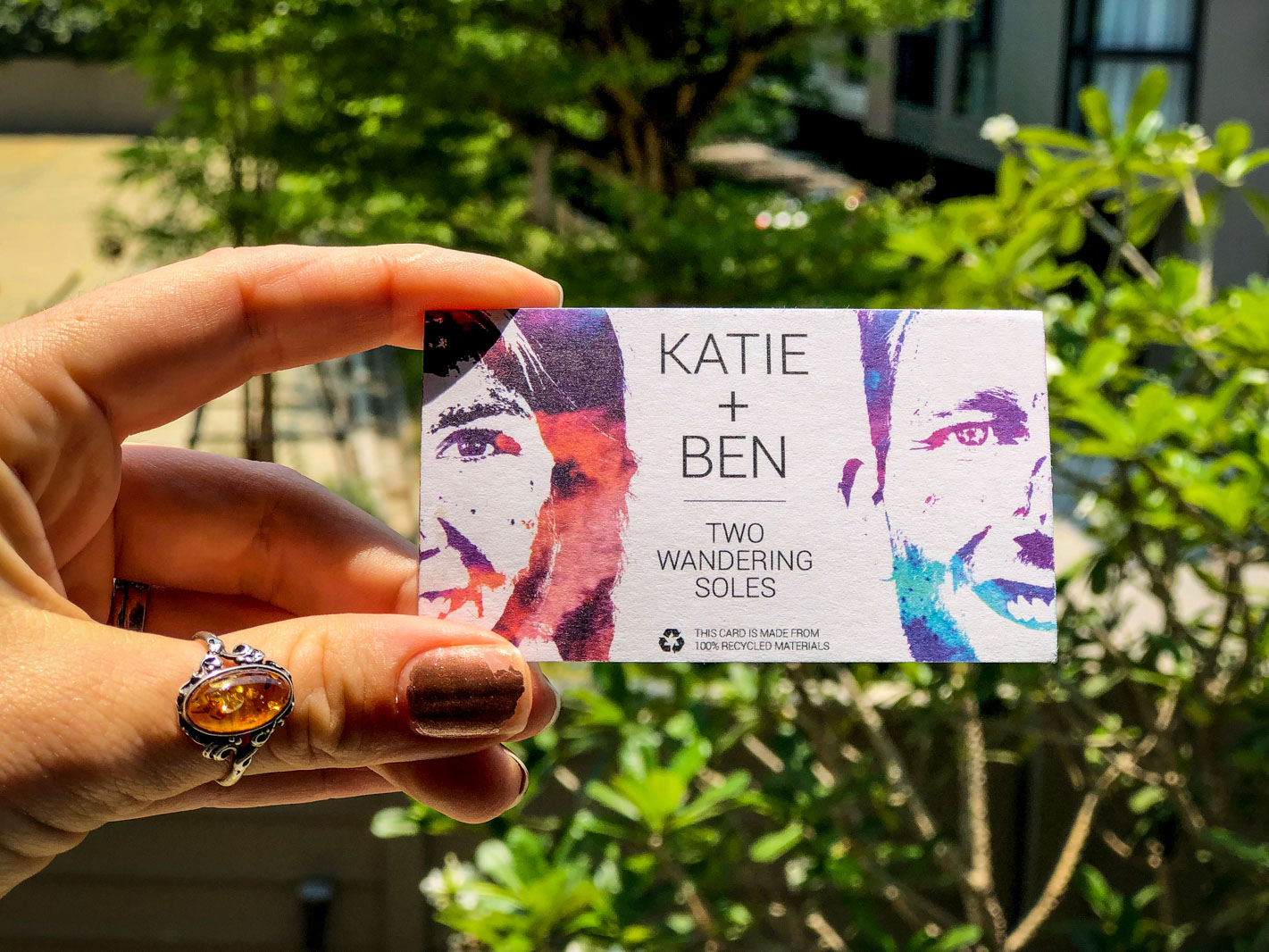
Next Steps…
At this point, you should have a list of some potential blog names that are creative, describe your website, and fit your desired tone.
But before your purchase your domain, be sure you keep reading. We’re going over what mistakes you should be sure to avoid when naming your blog.
Blog Name Mistakes to Avoid
We’ve known some bloggers who have made some big mistakes when choosing their website name. Some have even said that they feel like their blog name has hindered their success. So why don’t they just change their name? Although it is possible, switching domains and rebranding is a pain in the ass.
So avoid some of the major mistakes from the start so you don’t have to worry about it in the future.
Step #7: Size really does matter
And bigger is not better in this case.
When it comes to your blog name, make sure it’s not too long. Our advice would be to keep it to a maximum of 4 words. But also consider the length of each word, too. Using connecting words like “the”, “a”, or “and” isn’t going to add much length. But if you have 3 really long words in your title, it can be a problem.
Even our blog name is too long to be a handle on Twitter, which only allows a total of 15 characters.
Two Wandering Soles had to be compressed to @2WanderingSoles, and even then, it just barely fit.
So if you have a longer blog name in mind, brainstorm some shorter options for social media handles, and maybe even consider shortening it altogether.
Step #8: Make sure it’s not already taken
First things first: Before you get 100% set on a domain name, you want to be positive it is not already taken.
How to check if your domain name is taken: Funny enough, there are whole blog posts out there on this, but it’s really simple:
-
Take your blog name (no spaces) and put “.com” (or whatever “dot something”) after it, and put in your search bar and press enter.
-
That’s it!
If it’s taken, you’ll know right away because you’ll land on a website. If you get a 404 Error, then that probably means it available! Yay!
And also, check if it’s available on social media. Look into if the Instagram handles and Facebook pages already exist for your new blog name as well.
If you’re set on a blog name and the handles are already taken, there are ways to work around it, like shorting words or using underscores and periods. However, consider how this will affect your branding if there’s already an active account with your name.
Step #9: Time Travel Test
Fast forward 5 years from now. Imagine where you want to be. Who you want to be. And ask yourself this: Will this blog name still represent you?
For instance, let’s say your name is Johanna and want to write about solo female travel, and the domain you have in mind is “Solo Jo”. This would be a great domain for many reasons: It’s easy to remember, it represents you, it has a fun tone, and it in some way explains what the site is about.
But let’s also say for the purpose of this exercise that in 5 years, you have a partner. Will you still want to focus on solo travel even when your life changes? Maybe you will, and that’s fantastic. Sharing the importance of solo travel even while in a relationship would be a rad niche. However, it is going to be difficult to shift your focus from solo female travel to couple travel if the word “solo” is in your domain. This isn’t to say it can’t be done, but there will be roadblocks.
Step #10: Be cautious about “Place Names”
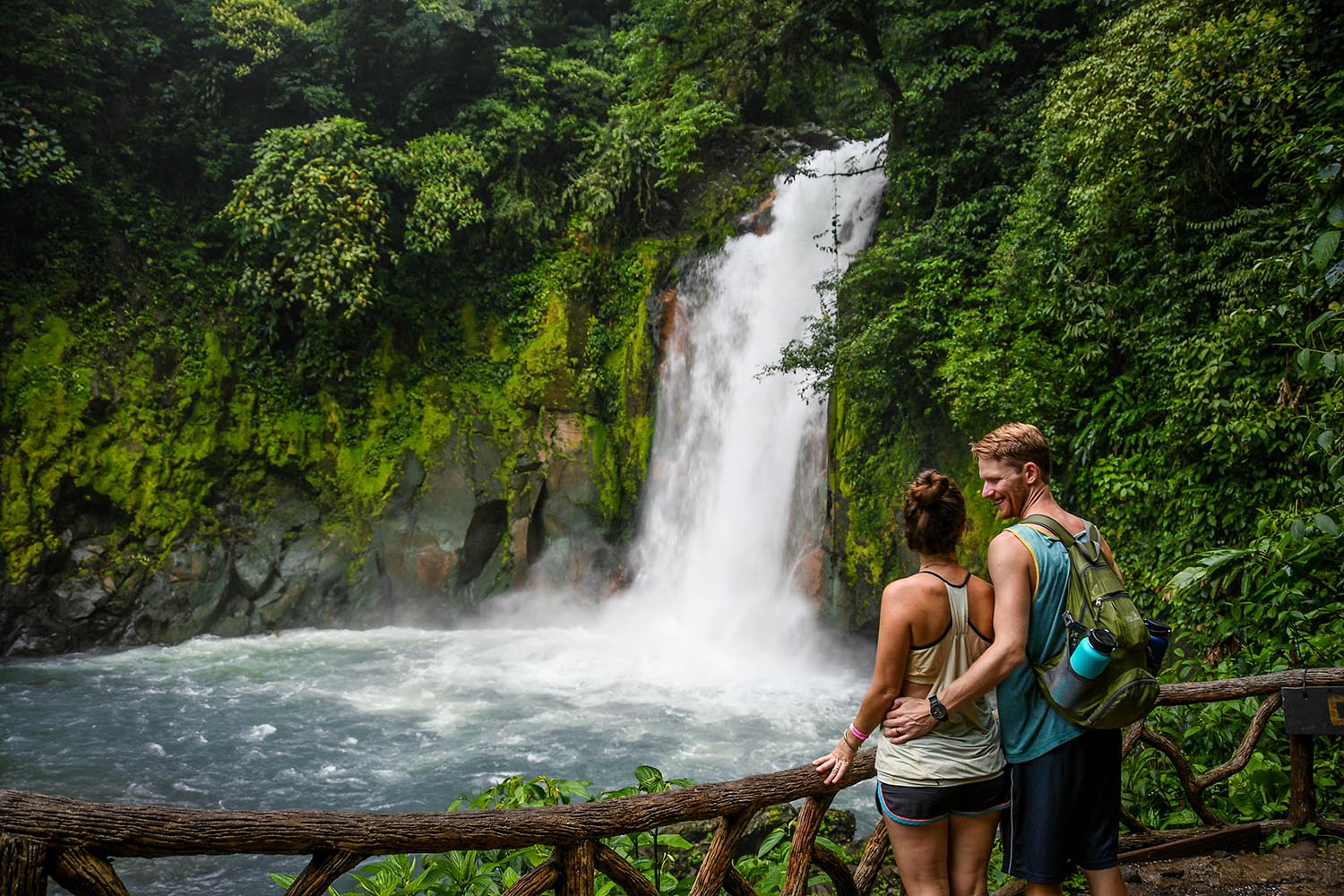
We’d recommend staying away from putting a place name in your domain for travel blogs.
There are some very successful bloggers who have tied their websites to a location: 2 Weeks in Costa Rica and Tieland to Thailand, for example. Being that the country name is in the URL, they can often rank a little easier for those destinations, so this can actually be a good strategy for some people.
But what happens when you want to write about other places? What happens when you move out of Thailand or Costa Rica? This will be a problem that you will encounter down the road, and you will likely start kicking yourself for choosing a location-specific domain.
If you don’t intend to be tied to one place forever, we’d recommend staying away from place names.
Step #11: How does it sound?
A word might have a beautiful definition (see Step #4), yet it might not sound very good when spoken out loud.
For example: Ataraxia = a state of peace and calm; emotional tranquility.
This word has a beautiful meaning, but a blog named “Ataraxia Adventures” sounds unmistakably like “Anorexia Adventures”, and is not going to communicate the message you want to send very well.
If one of your ideas doesn’t truly sound right, just eliminate it. This will no doubt cause problems.
Step #12: Consider the spelling
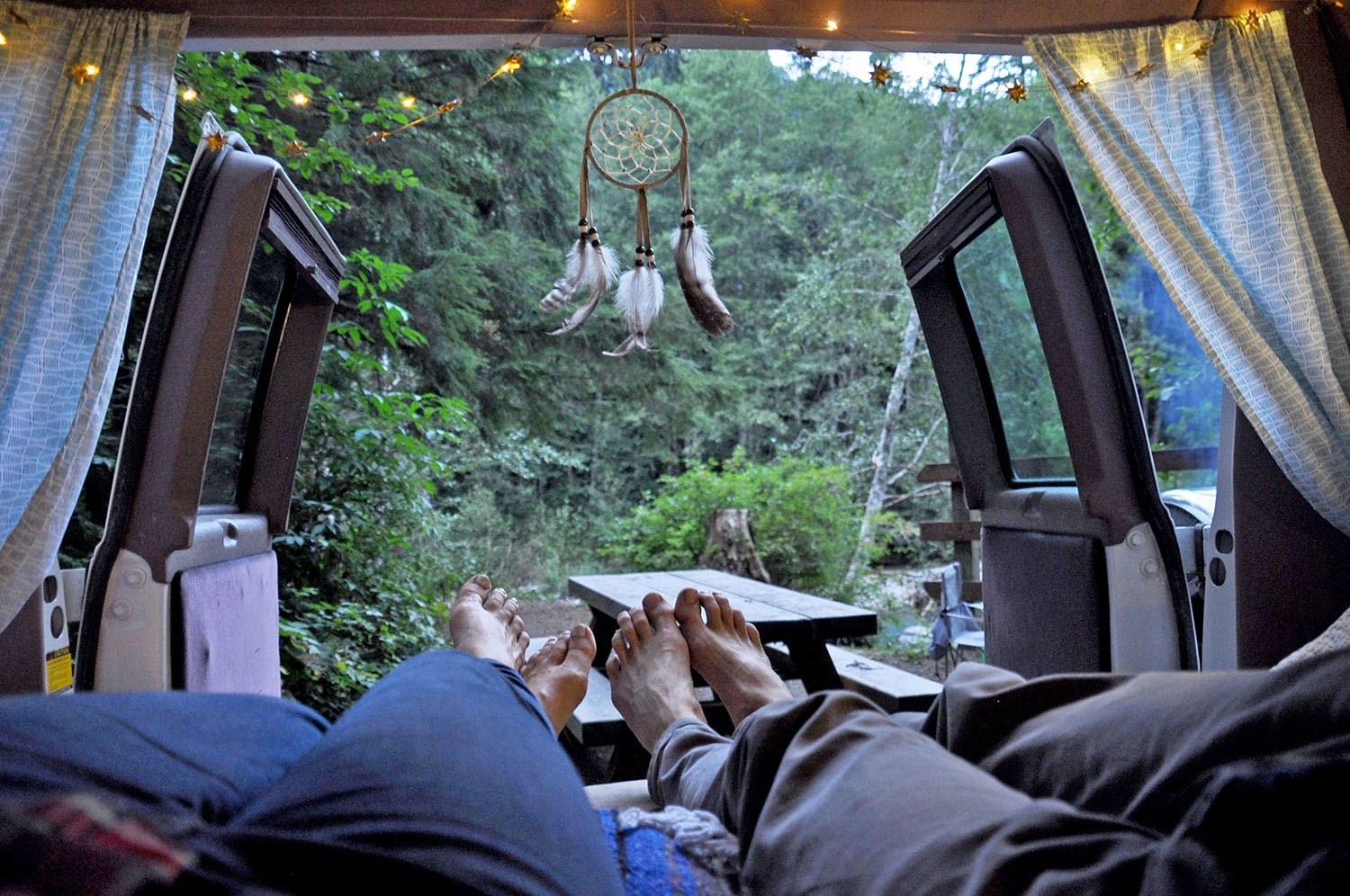
This is a point we can talk about from experience! If you haven’t noticed, the name of our blog, “Two Wandering Soles” is a play on words.
Soles is spelled to mean “feet”, but when spoken, most people assume it is “Souls”, like spirits.
Just about every time we tell someone our site name out loud, we need to follow up with “spelled S-O-L-E-S, like feet”. It used to annoy me, but I’ve come to take it as an opportunity to explain the pun and (hopefully) make our name more memorable.
If you plan to use your name as part of your domain and you have a non-traditional spelling (like Kaytie instead of Katie), it’s not necessarily a death sentence to your website, but just be prepared to explain it and spell it out on the regular.
There are some major brands who have been very successful with “different” spellings, like Tumblr and Chick Fil-A, and sometimes this unique spelling is even a big part of their branding.
One more thing to think about: American spelling vs. British spelling. Will you use “Traveler” or “Traveller” in your blog name?
Step #13: How does it read as a URL?
When all the words are squished together in URL form, does the meaning change? This is one most people never think about. When you choose a blog name, you see it the way you want to. And you might miss something big…

Just check out these website names (read them a couple times if you don’t see the problem right away):
-
Pen Island = penisland.com
-
Therapist Finder = therapistfinder.com
-
Teachers Talking = teacherstalking.org
-
Speed of Art = speedofart.com
There’s even an article dedicated to the worst domain names if you want a good laugh!
But learn from the mistakes of others, and make sure when your site name is combined on one line, it still reads as it should.
Step #14: Ask a Friend
Choose 3 people who are very different: Your grandma, your 10-year-old cousin, and your best friend. Now you can actually ask them what they think of your blog names, or you can simply imagine what they’d say.
Would your grandma ask you to repeat it 17 times and then explain it? Would your BFF say it “lacks personality”? Would your cousin giggle and say it sounds like a dirty word?
These people might not be your idea audience, so take their criticisms (real or imagined) lightly. Just because your grandma doesn’t get it doesn’t mean it’s not a great name. But doing this exercise might point out some holes or things you didn’t think about until you tried to see the name through someone else’s perspective.
Takeaways of Choosing a Blog Name
Ask yourself these questions:
-
Is my blog name easy to say and read and spell?
-
Is it memorable?
-
Is it timeless?
-
Does it describe what my blog is about?
You don’t have to answer yes to every single one of these, but you should have at least considered them and thought through the impact of each. If you’re ready with your blog name, continue on with the rest of the steps on How to Start a Successful Travel Blog article.
And be sure to sign up for the first 3 lessons of our Blogging Bootcamp, entirely for FREE!
Interested in learning more about blogging?
Be sure to check out our Blogging Resources Page for the chance to enter our FREE mini-course on starting a blog, plus all sorts of other great info about blogging! Here are some of our favorite articles about blogging below…
-
What Nobody Tells You About Being a Travel Blogger: No Bullshit Rundown
-
Get Paid to Travel: How to Start a Money-Making Travel Blog Today
Save this article on Pinterest for later!
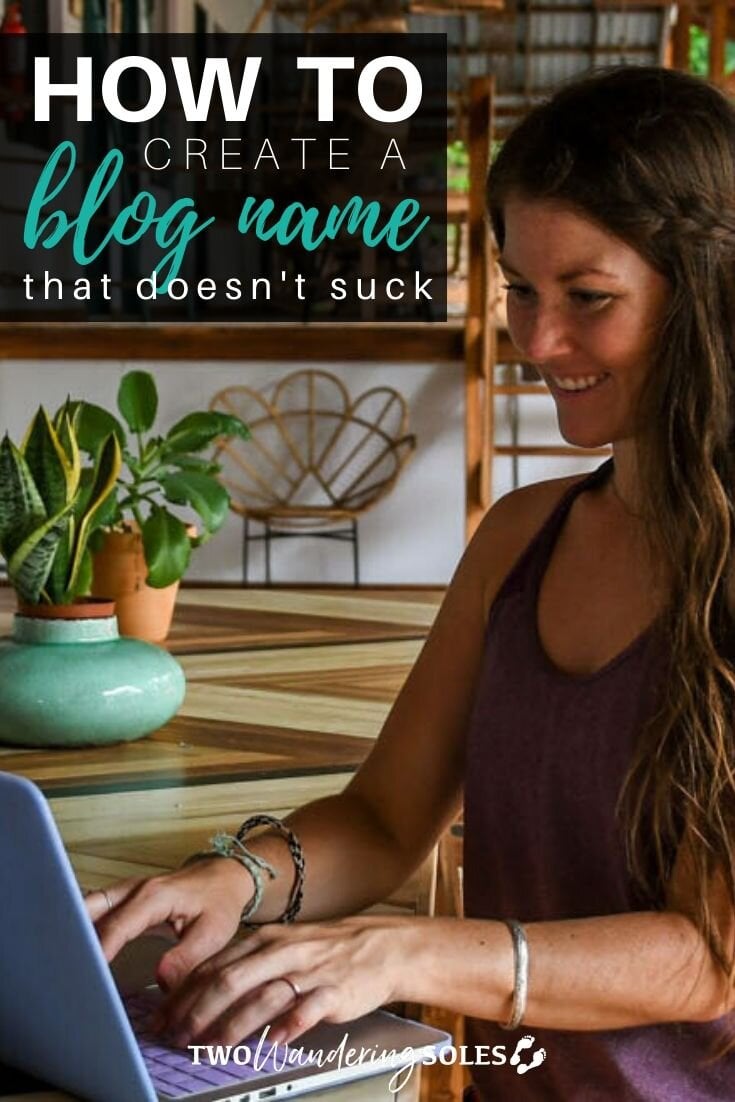





We want to hear from you!
Which strategy worked best for you? Debating between 2 names? Are you still stuck when it comes to naming your blog? Comment below and we’ll do our best to reply!


I have looked for a variety of information and I am very happy to see this article.
I appreciate you taking the time to create an article on this. Looking forward to putting this into action for my brand.
Wow this was so helpful!! I’m planning on doing another backpacking trip next year and writing a blog this time around. I’m not the most incredible writer in the world but I figured I would give it a go, and you can only get better with more practice, right? LOL! I just came up with my blog name and appreciate all the tricks in picking it!
Hello Katie & Ben ,
I write you from Bulgaria. Thank you for the good advice in this article! I have hesitations between two names for a blog ho present a tоwn where I live – visitstarazagora.bg or starazagora.love. The name of my town is Stara Zagora.
Would you share what do you think?
I learn so much from you as well! Thank you so much for sharing your helpful information.
I found your blog by chance. It’s amazing great effort. Thank you so much.